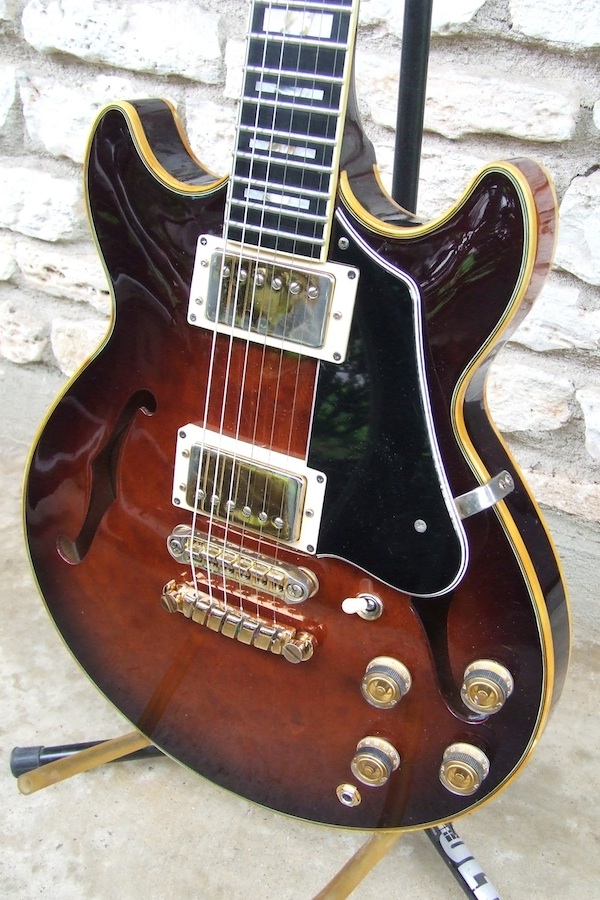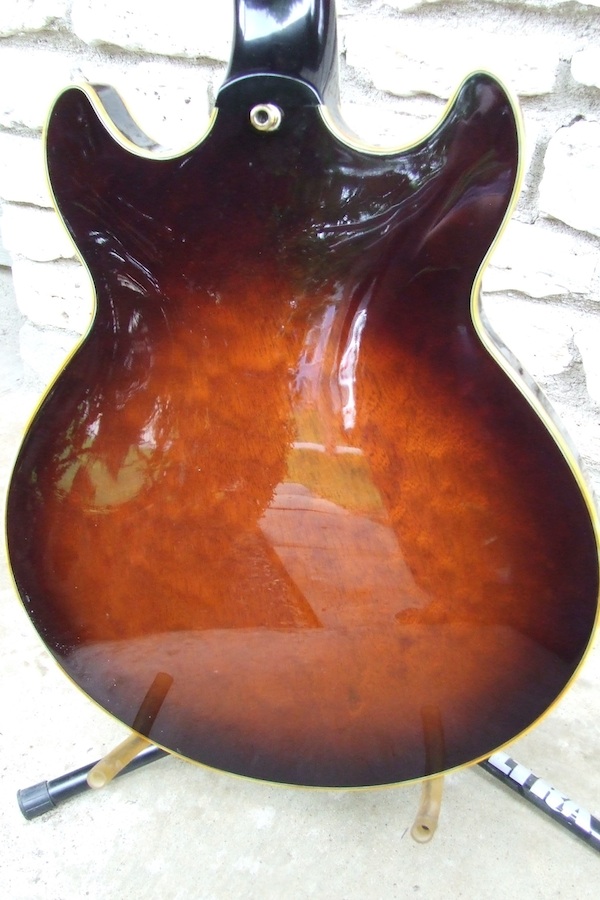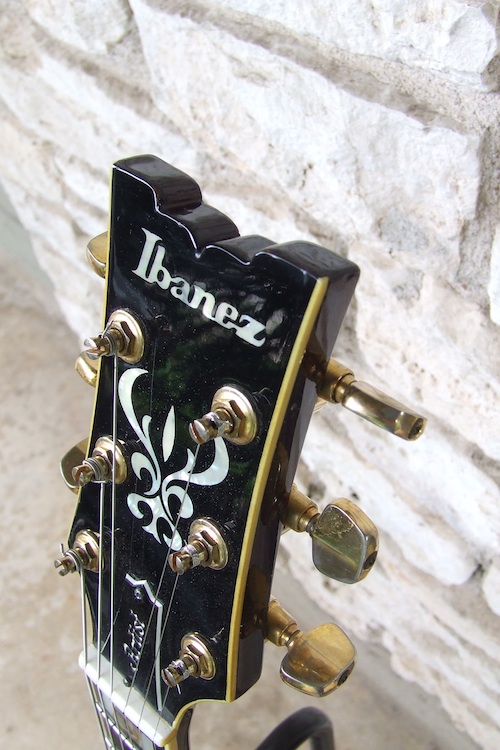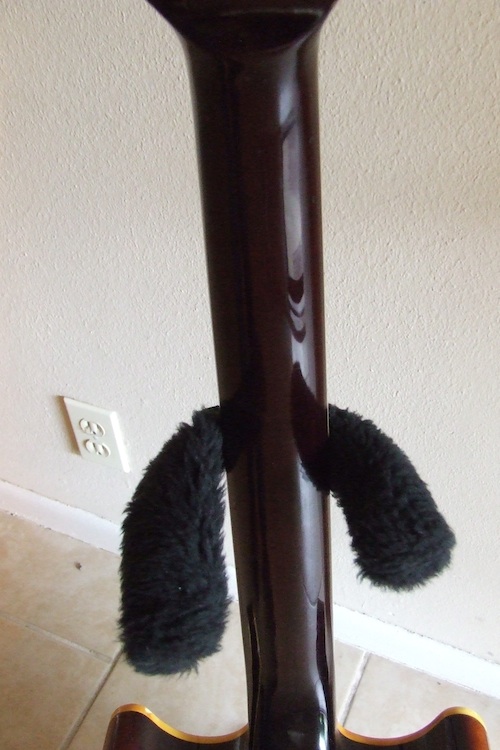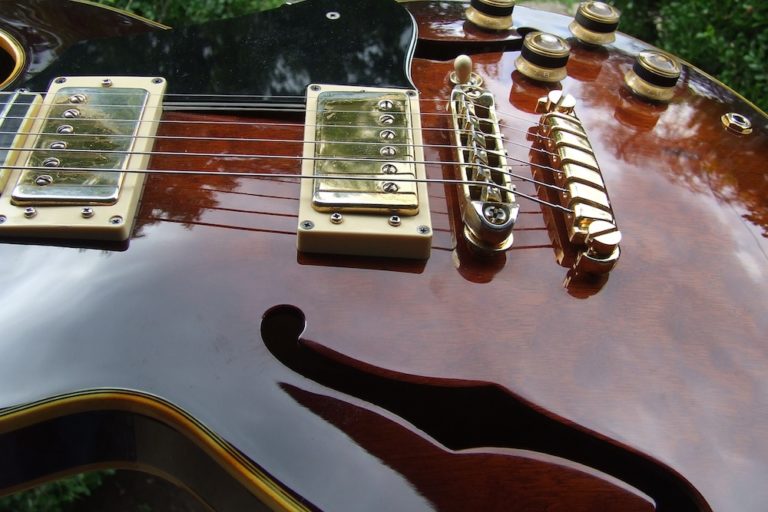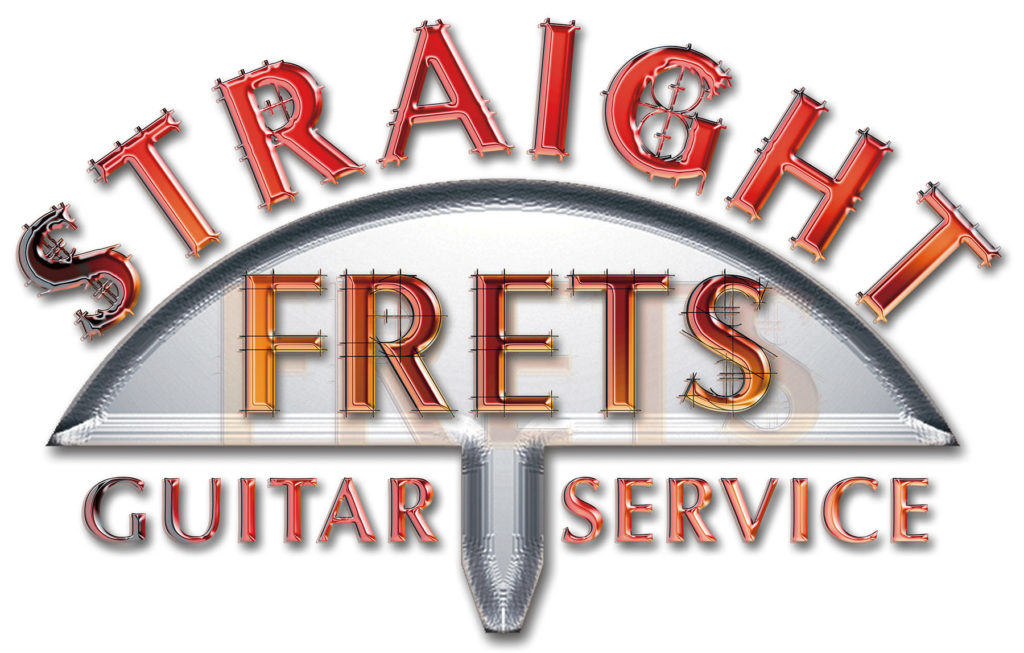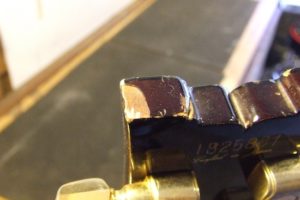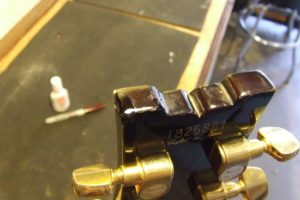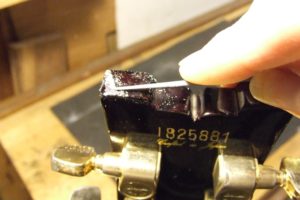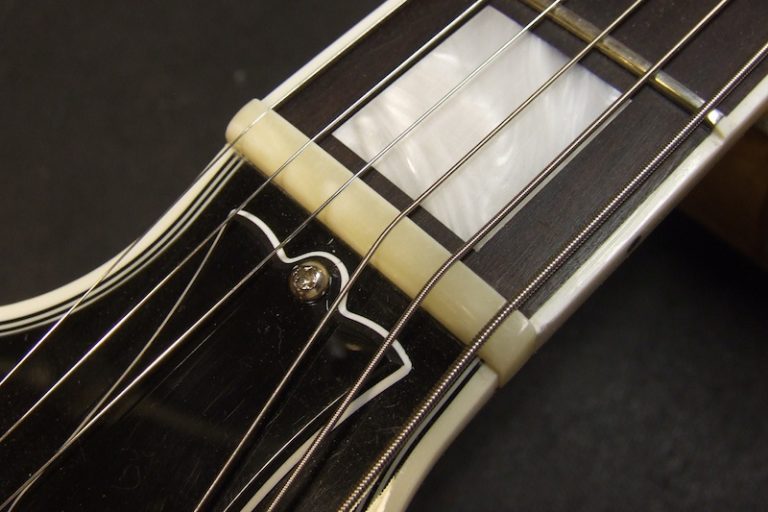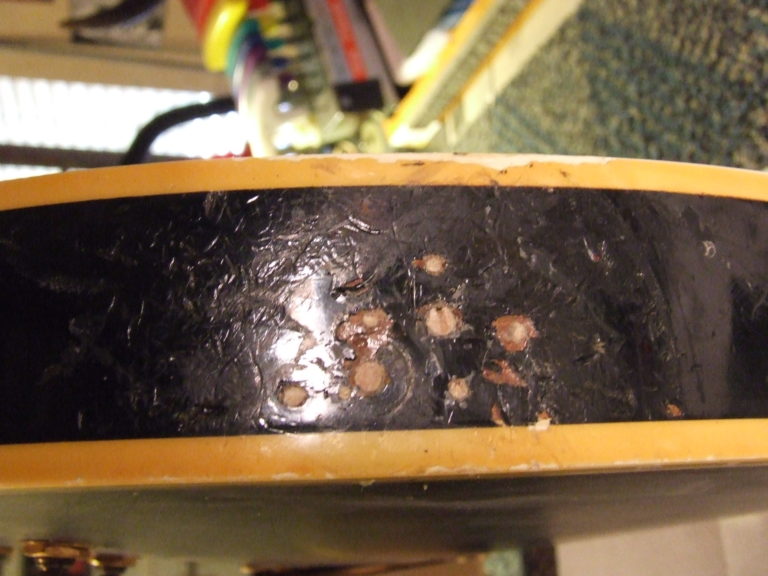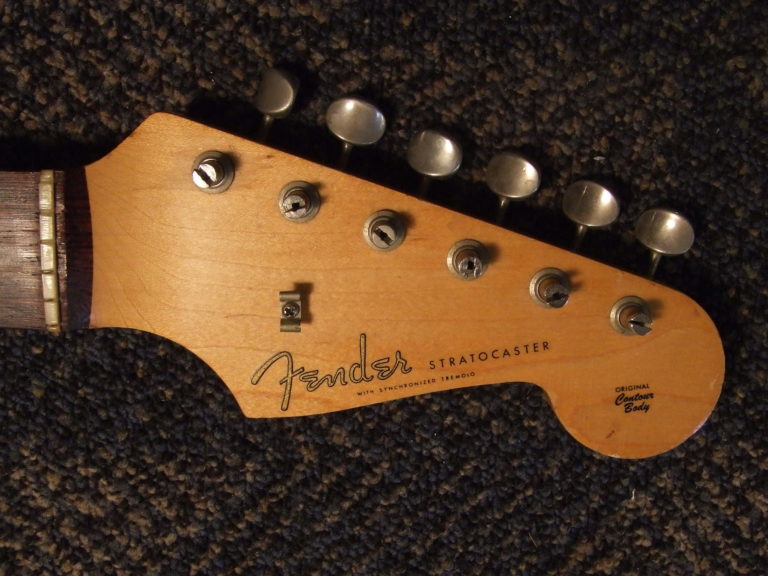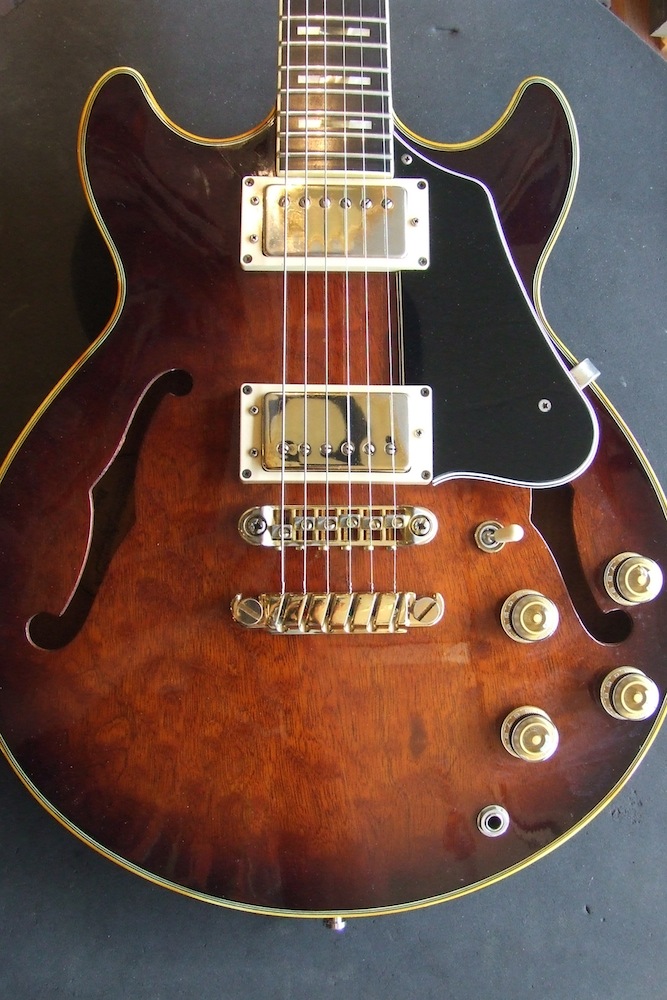
Here’s one of my favorite guitars ever: a 1982 Ibanez AM-205. Similar to the AM-50 and AM-100 (and a Gibson 339), the 205 has some personality differences: an ebony fingerboard with block abalone shell inlays, gold hardware, and a burled mahogany body. This one was in pretty decent shape, and had recently been setup at the local vintage store, but the new owner wanted more than that, so he brought it to me to pull out all the stops on this one to make it as cosmetically appealing as possible.
At my shop, this guitar received several chips repaired at the head, stripped truss rod screw holes filled and redrilled, 14 dents in the back of the neck filled, filed, sanded & buffed, a bone nut installed with yellow finish added to the side and blended into the aged binding, uneven abalone block inlays filed into the ebony, frets leveled crowned and buffed, sloppy over spray in the F-holes careful sanded and restained, buckled rash sanded and buffed from the back, gold strap buttons installed, a gold input jack nut and washer replaced, 3-way switch turned to match the trajectory of the hand, and finally action, truss rod, and intonation set with a Peterson Strobe tuner.
Once the shaping has been done, I move onto great little Tropical Shine 4-way buffers. The final stage is approximately 4000 grit.
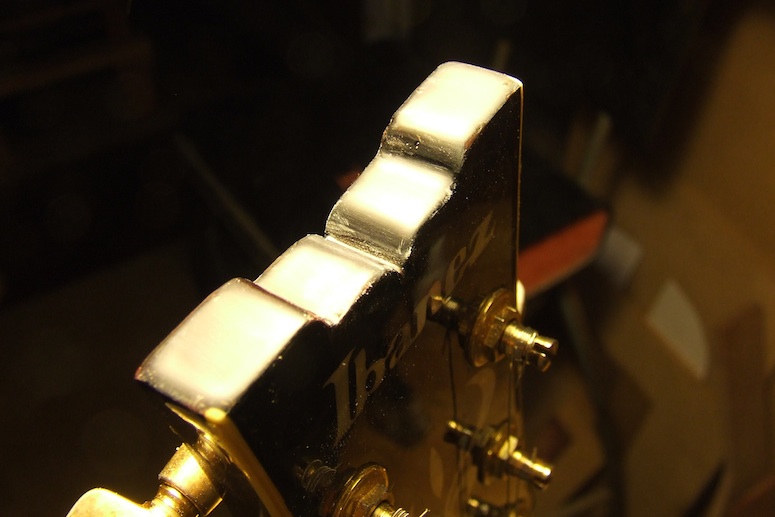
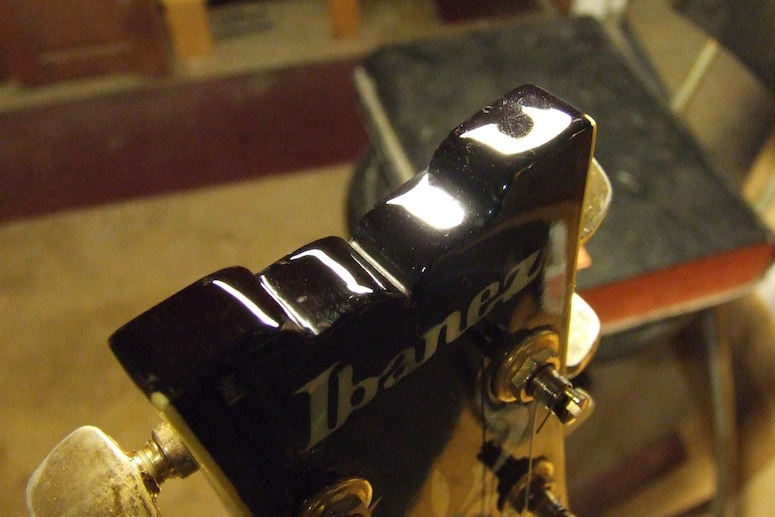
Years of buffing cars pays off with liquid Menzerna polishing compound, then finalized with Carnuba wax. She is now ready to show off her new hairdo.
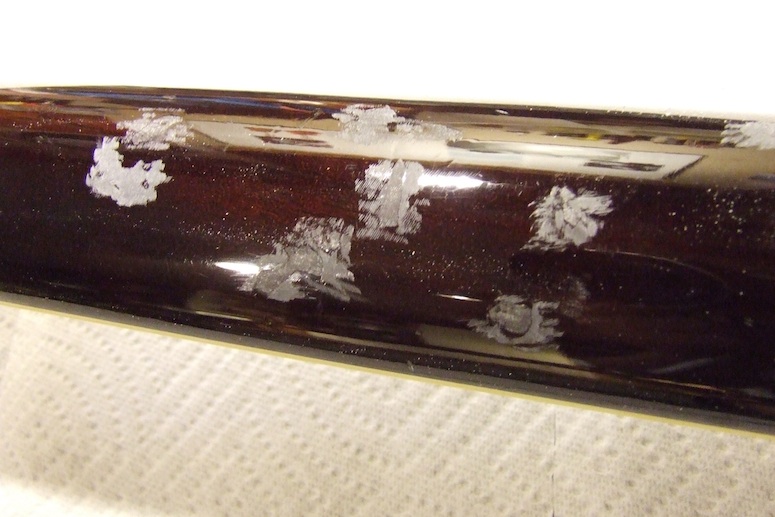
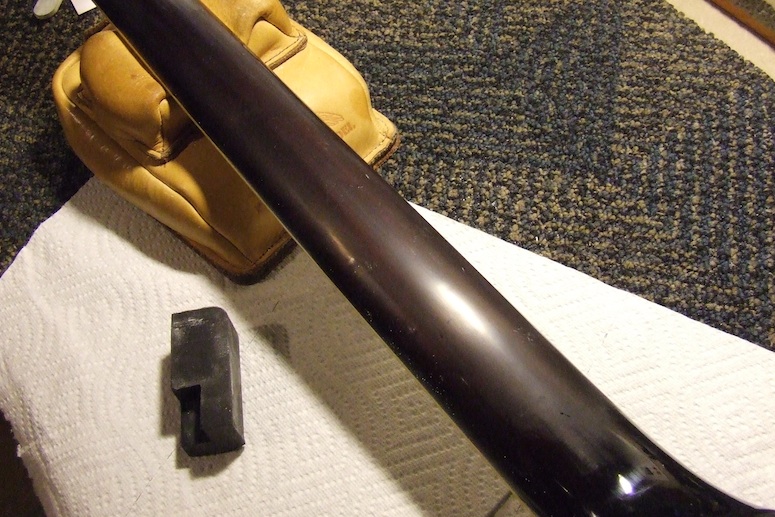
The back of the neck is quite similar, except there is no staining that needs to be done. I personally can’t stand bumps in the back of the neck while I’m playing and this guitar has more than its share. Once sanded up to 4000 and buffed out with compound and wax, nothing could be felt but a neck as slick as a pool cue.
This is one of the things I’m most proud of with the transformation of this guitar- a replaced bone nut with aged finish added to the sides which blend into the existing binding. Under closer inspection, we can see some damage done to this nut where the 3rd string leaves the nut. This not only moves the frets up the string towards the bridge about 1mm, but also creates an unclear tone when struck hard.
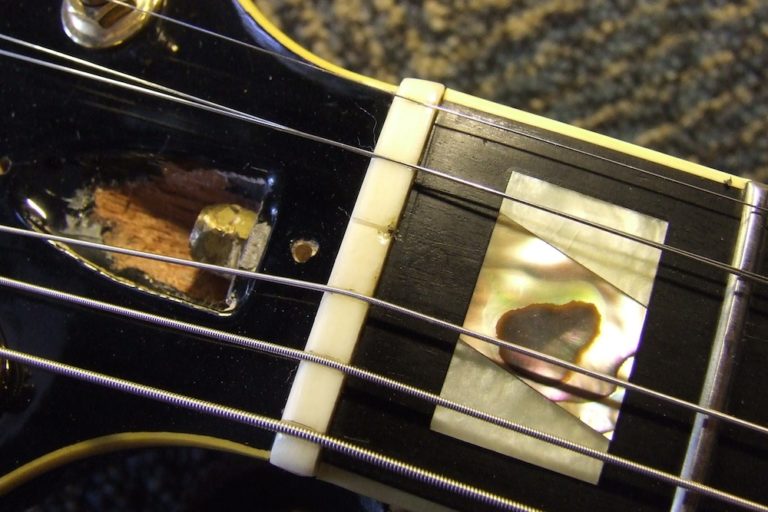
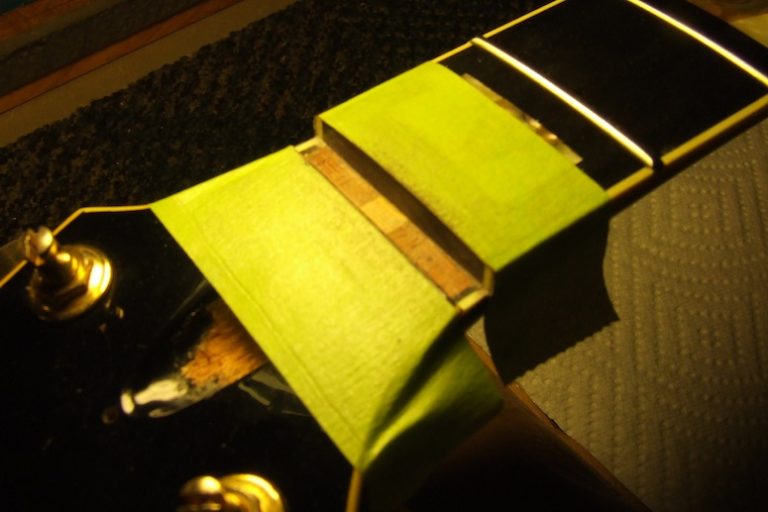
After the nut is carefully removed, the slot is squared up with a micro chisel, a dogleg skew chisel, a nut seating file, and some steel wool. The bone nut is made to match the original, but leaves about .015″ of even space on each side.
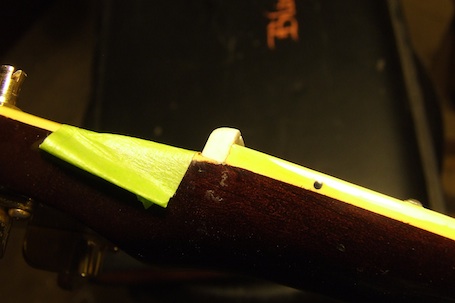
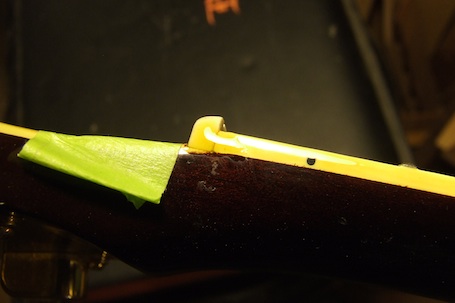
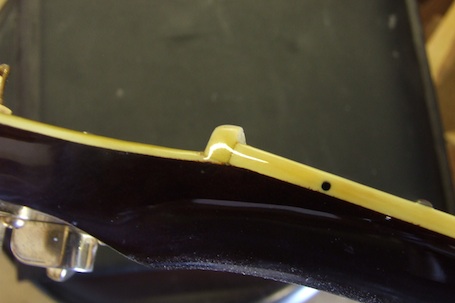
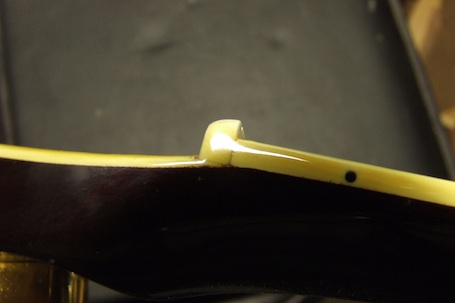
Once the nut is carefully glued in, I proceed to follow the steps that were taken with the chips in the head: carefully file, sand up to 4000 grit, buff with compound and follow with wax. The end result says original vintage, but we’ll keep that between us.
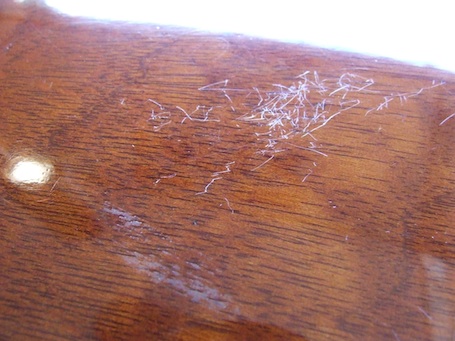
The buckle rash on this guitar was fairly bad. It made for a lot of sanding without burning through.
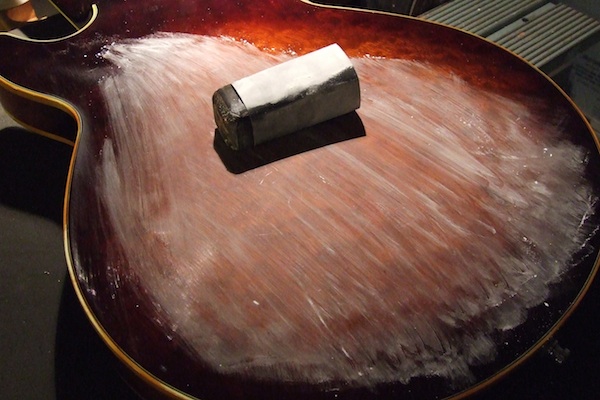
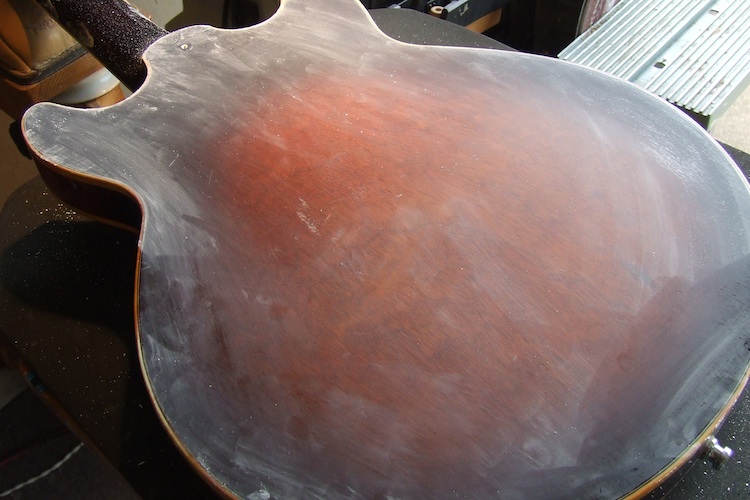
Here’s some shots of the guitar going from 600 grit all the way up to 2000. Some heavy buffing with Menzerna compound and some new buffing wheels for the Carnuba wax gets this guitar back in shape.
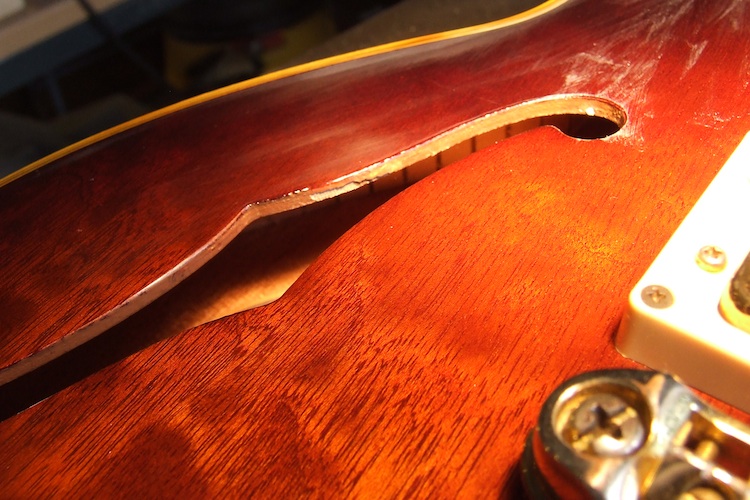
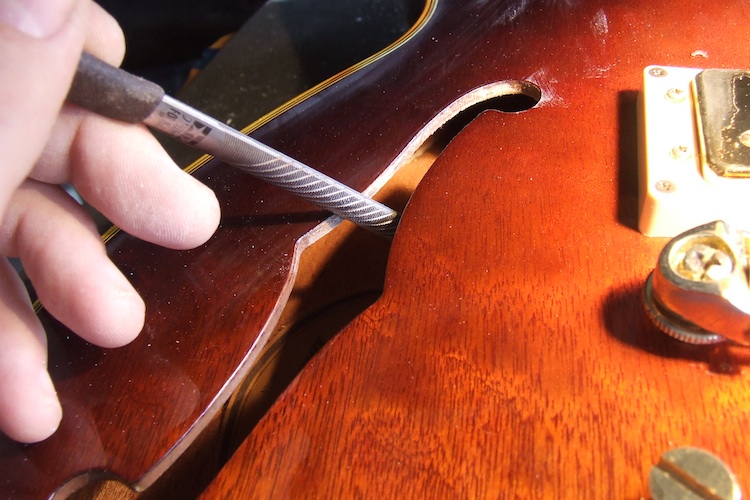
The F-holes on this AM-205 had some fairly ugly overspray. Taking this Tamya half round file, in addition to the brass wedge from a Harbor freight finger plane, allowed for these cavities looking like they just came from the dentist.
The other things done to this guitar (fret leveling, abalone shell inlay blended into the ebony, and a gold washer, nut and strap buttons replaced) rounded out this overhaul, making for a super deluxe setup.
